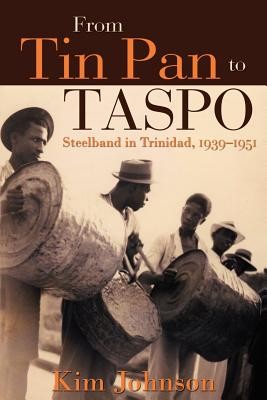
- We will send in 10–14 business days.
- Author: Kim Johnson
- Publisher: University of the West Indies Press
- Year: 2011
- Pages: 360
- ISBN-10: 976640254X
- ISBN-13: 9789766402549
- Format: 15 x 22.6 x 2.3 cm, minkšti viršeliai
- Language: English
- SAVE -10% with code: EXTRA
Reviews
Description
From its first appearance in 1939 with a group of men knocking on pots and pans to the 1951 Trinidad All-Steel Percussion Orchestra (TASPO), steelband has fascinated the world. Relying largely on oral histories, this work investigates and documents the different technical, musical and organizational steps by which the steelband movement was born and grew to maturity.
This study is a radical break with the approach to cultural creativity in general and music of the African diaspora in particular, emphasizing the role of individual agency, microsociology and aesthetic values. This contrasts with the "resistance" school of thought, which views music as an automatic reaction to oppression rather than a deliberate attempt to satisfy aesthetic needs and impulses.
The minute biographical and psychological details provide a unique theory of creolization and chart its relationship to African retentions, based on empirical data. This authoritative study will appeal to both the general reader interested in the origins of steelband and to scholars concerned with the creolization of African and European cultures and Caribbean creativity.
EXTRA 10 % discount with code: EXTRA
The promotion ends in 23d.06:10:53
The discount code is valid when purchasing from 10 €. Discounts do not stack.
- Author: Kim Johnson
- Publisher: University of the West Indies Press
- Year: 2011
- Pages: 360
- ISBN-10: 976640254X
- ISBN-13: 9789766402549
- Format: 15 x 22.6 x 2.3 cm, minkšti viršeliai
- Language: English English
From its first appearance in 1939 with a group of men knocking on pots and pans to the 1951 Trinidad All-Steel Percussion Orchestra (TASPO), steelband has fascinated the world. Relying largely on oral histories, this work investigates and documents the different technical, musical and organizational steps by which the steelband movement was born and grew to maturity.
This study is a radical break with the approach to cultural creativity in general and music of the African diaspora in particular, emphasizing the role of individual agency, microsociology and aesthetic values. This contrasts with the "resistance" school of thought, which views music as an automatic reaction to oppression rather than a deliberate attempt to satisfy aesthetic needs and impulses.
The minute biographical and psychological details provide a unique theory of creolization and chart its relationship to African retentions, based on empirical data. This authoritative study will appeal to both the general reader interested in the origins of steelband and to scholars concerned with the creolization of African and European cultures and Caribbean creativity.


Reviews